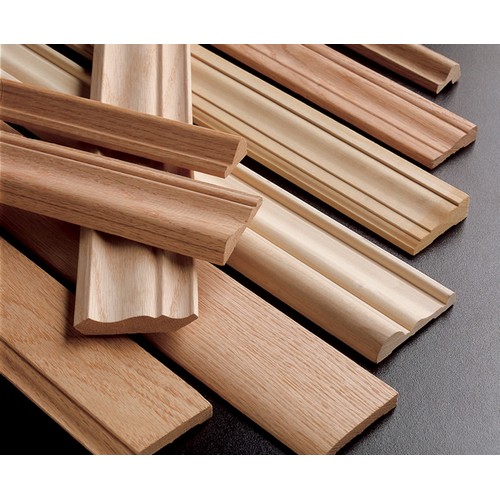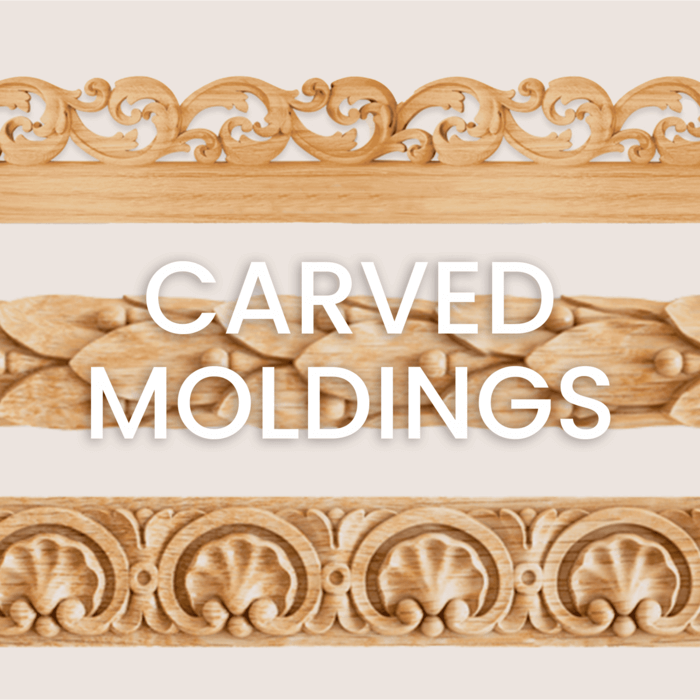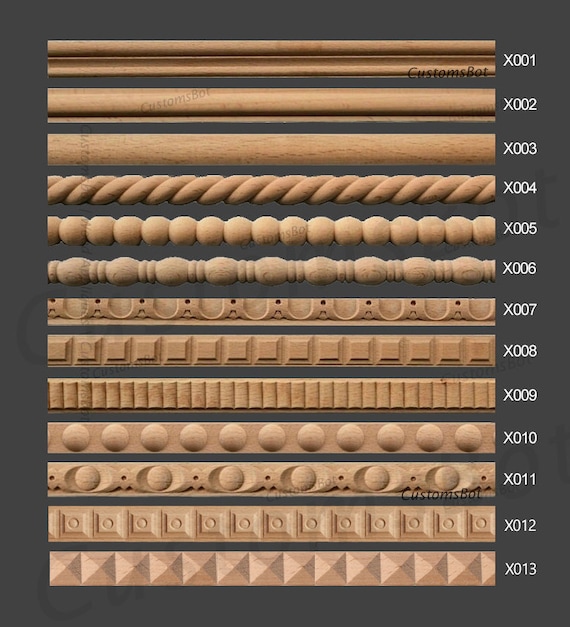When it comes to home decor, one of the elements that often gets overlooked is wood decorative molding. However, this simple addition can dramatically enhance the aesthetics of any room. Having personally used wood molding in my home renovation, I was amazed at how these intricate details transformed the space. In this guide, we’ll explore various types of wood molding, how to choose the right one for your needs, installation tips, and maintenance advice.
What is Wood Decorative Molding?
Wood decorative molding refers to the architectural elements made from wood that are used to enhance the visual appeal of both interior and exterior spaces. They serve both functional and artistic purposes, adding texture and style to walls, ceilings, doors, and windows.
Types of Wood Decorative Molding
Wood molding comes in various styles, each serving different aesthetic and structural functions. Below are some of the most common types:
Crown Molding
Crown molding is a type of molding that runs along the top of walls and under the ceiling, adding elegance to any room. It can make a room feel taller and more sophisticated.
Base Molding
Base molding, or baseboards, is installed at the bottom of walls where they meet the floor. This type of molding protects the walls and adds a finishing touch to any room.
Chair Rail Molding
Chair rail molding is installed horizontally around the room, typically at about one-third the height of the wall. It is designed to protect the walls from damage caused by chairs and adds a decorative element.
Casing Molding
Casing molding is used around doors and windows, framing them and adding detail to the entrances of a room. It is often more decorative than baseboards and is an integral part of a room’s design.

Pictorial Molding
Pictorial molding is used to frame artwork or mirrors. This can turn an ordinary piece into a stunning focal point, enhancing the decor of the room.
Choosing the Right Wood Decorative Molding
Selecting the right molding can be a little overwhelming given the vast array of choices. Here are some factors to consider when making your selection:

Style of Your Home
Consider the architectural style of your home. A Victorian home may benefit from intricate crown moldings, while a modern home may look better with sleek, minimalist designs.
Height of Ceilings
If you have high ceilings, opting for taller crown moldings can help fill the vertical space and create a cohesive look.

Personal Taste
Your personal taste is crucial. If you love ornate details, consider elaborate designs; if you prefer simplicity, go for cleaner lines.
Comparison Table of Popular Molding Styles
| Type | Height | Aesthetic | Best For |
|---|---|---|---|
| Crown Molding | 4-12 inches | Ornate, Traditional | Living Rooms, Dining Rooms |
| Base Molding | 3-5 inches | Simple, Elegant | All Rooms |
| Chair Rail Molding | 2-3 inches | Stylish, Protective | Dining Rooms, Hallways |
| Casing Molding | 3-5 inches | Decorative, Framing | Doors, Windows |
| Pictorial Molding | Varies | Artistic, Focused | Artwork, Mirrors |

Installation of Wood Decorative Molding
Installing wood molding can be a satisfying DIY project, but it does require some tools and techniques to get it right. Here’s a step-by-step guide:
Tools and Materials Needed
- Measuring tape
- Miter saw
- Nail gun (or hammer and finishing nails)
- Wood glue
- Stud finder
- Caulk and caulking gun
- Sandpaper
- Paint or stain (optional)

Step-by-Step Installation Process
- Measure the Area: Use a measuring tape to determine how much molding you’ll need.
- Cut the Molding: Use a miter saw for clean, accurate cuts. Make 45-degree cuts for corners.
- Align and Secure: Position the molding on the wall and secure it with a nail gun or hammer. Use wood glue for added stability.
- Caulk the Seams: Fill in any gaps with caulk for a seamless look. This is especially important in corners.
- Finish: Sand any rough edges, then paint or stain the molding as desired.
Maintenance of Wood Decorative Molding
Wood molding adds beauty, but it also requires regular maintenance to sustain its look and integrity. Here are some tips for maintaining wood moldings:

Cleaning
Regular dusting with a microfiber cloth can keep your moldings looking fresh. For more stubborn dirt, a damp cloth can be used, followed by a dry cloth to remove any moisture.
Painting and Staining
Occasionally, you may want to repaint or re-stain your moldings. Ensure you sand the surface lightly before applying paint or stain for a better finish.

Inspections for Damage
Inspect your moldings regularly for signs of wear, damage, or pest infestation. Address any issues promptly to avoid costly repairs.
Pros and Cons of Wood Decorative Molding
Pros
- Aesthetic Appeal: Enhances the beauty and character of any room.
- Increases Home Value: Well-maintained moldings can add to the overall value of your home.
- Customizable: Available in various styles, colors, and finishes to suit personal tastes.
- Durability: Wood moldings, when cared for, can last for many years.
Cons
- Cost: High-quality wood molding can be expensive.
- Maintenance: Wood requires regular maintenance to prevent damage.
- Installation Complexity: Installation can be challenging, especially for beginners.
FAQs About Wood Decorative Molding
1. What types of wood are best for decorative molding?
The best types of wood for decorative molding include oak, pine, maple, and cherry. Each type has its benefits, such as durability and ease of painting or staining.
2. Can I install wood decorative molding myself?
Yes! With the right tools and some DIY skills, you can install wood molding yourself. However, if you’re unsure, hiring a professional can ensure a perfect installation.
3. How can I paint or stain wood molding?
Before painting or staining, make sure to clean and sand the surface. Apply a primer for paint or a wood conditioner for stain. Then, use a brush to apply your chosen finish.
4. How do I care for wood molding?
Regular dusting, inspecting for damage, and reapplying paint or stain as needed will keep your wood molding looking its best.
5. What are the trends in wood molding today?
Current trends include minimalist designs, painted moldings in bold colors, and a mix of different materials for a modern touch.
Conclusion
Wood decorative molding can be a fantastic addition to any home, offering both beauty and functionality. By choosing the right style, understanding installation techniques, and committing to maintenance, you can enjoy the elegance of wood molding for years to come. Remember, a little effort in selection and care can lead to a stunning transformation in your living space!